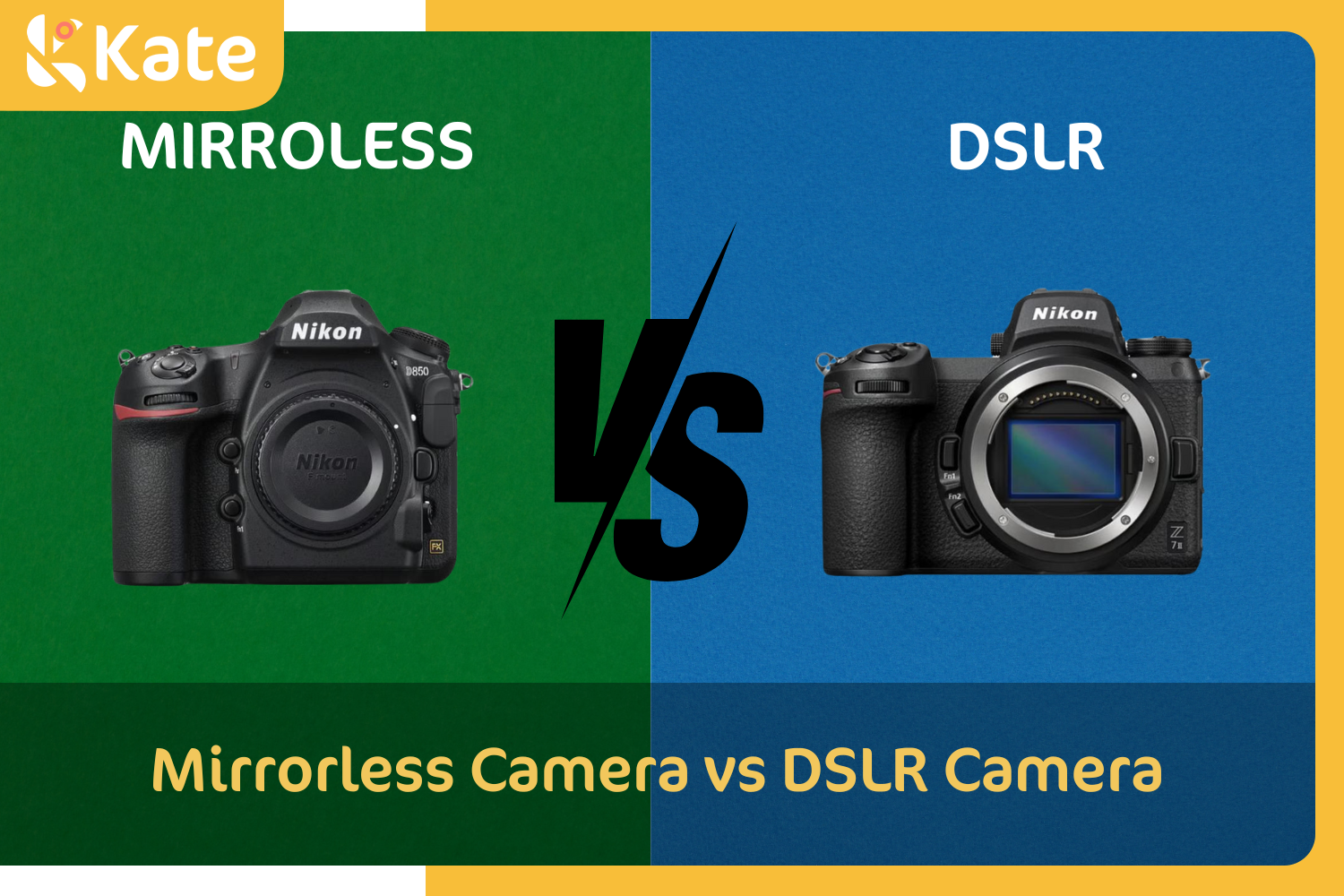Post Processing in Photography: What to Know About it

Post processing is an important part of photography because it allows you to take a good image and improve it in custom ways to fit your exact idea of what the final product should be.
This beginners guide to post processing in photography covers essential software and tools and how to make the most of them. What changes can be made in post processing are explained. A brief overview of popular software including Adobe Photoshop and Lightroom, Capture One, GIMP and more is included.
You’ll also find a suggested workflow for post processing and tips for gaining experience and eventually expertise in advanced photo editing.
- What Is Photography Post Processing?
- What Photo Editing Tools Are Used?
- What Software is Used in Post Processing?
- What Changes to a Photo Are Made in Post Processing?
- What does Post Processing Workflow in Digital Photography Include
- What are Tips for Post Processing
What Is Photography Post Processing?
Post-processing in photography is a set of techniques and tools included in software used to modify and enhance an image after it is taken by a camera. Post-processing is possible because the data captured by a digital camera can be altered and adjusted, especially when the image is captured in RAW.
Post-processing is important to photographers because it allows them to adjust an existing image that fits their vision for capturing it in the first place. Processing an image can be done for technical reasons to perfect an image by correcting problems, but it is also done for artistic reasons that give the photographer the opportunity to deliver a unique statement or look in their work.
Common post-processing tasks used to improve essential elements of the picture include exposure, color, noise reduction, sharpening of the image, cropping and straightening, retouching and adding effects. The most popular post-processing software include Adobe Photoshop, Adobe Lightroom, and Capture One.
What Photo Editing Tools Are Used?
There are a handful of common photo editing tools available within the software used for post-processing. Here’s an overview of these digital tools.
- Cropping tool:All photo editing software contains a cropping tool that allows you to trim one or more sides to remove unwanted elements, improve the composition in terms of the balance and framing of the image.
- Slider to adjust exposure:The exposure slider tool allows you to adjust the overall brightness of the image. Exposure can be increased for brighter pictures and reduced if the image is overexposed and needs darkening. This can result in better detail and enhanced mood.
- Sliders to adjust color:Most software includes three sliders to balance color within an image. For example, Photoshop has Cyan/Red, Magenta/Green and Yellow/Blue.
- Noise reduction:Software is designed to distinguish between true image detail and graininess, aka noise, that is not desired in the image. The noise is isolated from the rest of the image and removed or smoothed over through averaging or advanced techniques.
- Sharpening:You can give your photo subjects better definition and contrast around the edges using one or more sharpening tools like Adobe’s Sharpen tool.
- White balance presets:Similar to your camera, photo editing software has presets such as Daylight, Cloudy, Tungsten, Fluorescent, Flash and possibly a Custom option. These white balance tools are designed to cause lighting in an image to look natural and accurate.
- Levels:Levels tools are typically several sliders used to adjust the tone of the picture. The sliders are specifically used to adjust black, white and mid-tone.
- Curve:Curve tools are advanced color adjustment tools for precision modifications to brightness and color. A curve tool can be used to adjust color in a small area of the image or the entire image.
More details of how these tools are used follows below.
What Software is Used in Post Processing?
Photo editing software Adobe software is the most commonly used post processing software for photo editing, especially Lightroom and Photoshop. Capture One, Affinity Photo and a few open source software like GIMP plus mobile editing apps
Adobe Photoshop: Photoshop is the preferred photo editing and post-processing software of professional photographers, the industry standard. And Adobe continuously develops and improves its features to add versatility. Its main features and tools allow for both basic and advanced precision adjustments to images like cropping, correcting brightness and contrast. See the section on Photoshop below.
Adobe Lightroom: Lightroom is a powerful post-processing tool focused mainly on managing and processing a large number of images. It also contains key photo editing tools including RAW processing. See the section on Lightroom below.
Capture One: This is a professional-grade photo editing and processing software photographers like for its advanced capabilities, strength in photo organization and its ability for top-notch processing of RAW data.

Image from Captureone
The main tools and features in Capture One are RAW processing with outstanding color and quality, live-view and real-time editing with tethered shooting, post-processing functions including color and exposure, and additional processing in color grading, layer editing, contrast, brightness, lens correction plus good organization and batch processing. These tasks are accomplished using Capture One tools - Capture tools, Color tools, Details tools, Layer tools, Exposure tools, Library tools and Output tools, each with its own tab.
Affinity Photo: This is another professional quality photo editing software for processing images including RAW editing and High dynamic range (HDR) merging and tone mapping. Its main features are non-destructive editing using live filters and adjustment layers to changes in color, exposure and white balance.

Image from Affinity.serif
These post-processing tasks are done using selection tools including Photo Persona for basic adjustments like cropping or adding filters, Liquify Persona for refinement and artistic effects, Develop Persona for RAW processing and lens changes, Tone Mapping Persona for HDR mapping, and Export Persona for exporting whole images or slices.
Luminar by Skylum: This is a photo editing software that relies on artificial intelligence or AI tools including AI Sky Replacement, AI Structure Tool and AI Accent, which is a comprehensive photo adjustment tool for exposure, color, and contrast. Enhancement and creative tools are features too.

Image from Skylum
RAW editing is part of Luminar that includes editing with layers and masks along with basic post-processing tools for cropping, white balance and exposure. Batch processing and export to Adobe Photoshop and Lightroom are possible.
GIMP, or GNU Image Manipulation Program: This open source, free photo editing software gives you many of the tools and features found in Photoshop. These include non-destructive editing, a range of tools for selection and retouching, and layer management.

Image from Gimp
What users don’t like about GIMP are the non-traditional interface and time it takes to learn it, slower speed, limited RAW support and the fact it isn’t part of a post-processing system like Adobe Creative Cloud.
Adobe Photoshop
Photoshop is the best-selling photo post-processing and editing software on the market.
Core photo editing tools in Photoshop are used for selecting and masking areas of the image for photo corrections, marquee and lasso tools, magic wand, layering for editing that isn’t destructive – meaning that changes in brightness/color or hue/saturation aren’t permanent, filters for artistic effect and cast, brush tool for touching up or healing areas of the image, paint tools, clone stamp, patch too, and the option to add text for design and marketing.

Image from Adobe
Batch processing is an option with Photoshop. File formats supported include PSD, JPEG, PNG, GIF, TIFF, MP4. The software handles RAW files through Adobe Camera Raw (ACR). Photoshop is integrable with other Adobe applications like Lightroom and Illustrator using Adobe Creative Cloud.
Adobe Lightroom
This Adobe software’s greatest strength is outstanding image management that includes organization and batch processing functions, which apply changes to a large number of photos in one step.

Image from Adobe
Lightroom’s key features are:
- Non-destructive photo editing that preserves the original data.
- RAW processing with an easy to use workflow for photo corrections and modifications.
- Lightroom interfaces easily with Photoshop and other software tools in Adobe Creative Cloud to take full advantage of its powerful post-processing capabilities.
What Changes to a Photo Are Made in Post Processing?
Post-processing allows you to modify every aspect of an image in post-processing. It gives you the opportunity to correct what you didn’t get right when the image was shot. Common alterations include these:
- Exposure and color adjustments: Exposure features like brightness, contrast, and details can be enhanced or reduced. White balance, color vibrancy and saturation, and hue or tone can be altered to improve the photo’s color. These changes can be applied to the entire photo or to problem areas within it.
- Composition: Composition is the heart of photography. Post-processing tools improve composition whether you are shooting a portrait, landscape or any other scene. The work is done through cropping, straightening horizons and perspective, aspect ratio change and overall recomposition.
- Sharpness, clarity and noise adjustments: The image can be sharpened to have sharper edges and details. Contrast can be boosted to increase contrast for a clearer image. And both luminance and color noise can be reduced or minimized.
- Detail retouching, cleaning and correction: Tools like healing brushes, patch tools and clone stamps fix imperfections. They can be used to retouch skin, and eyes and teeth can be brightened while maintaining a natural look.
- Layers and masks:These advanced post-processing tools allow non-destructive photo editing of the whole or parts of the image with the ability to control whether changes are visible. Blending allows for layers to be combined in various ways.
- Local precision changes:Brush, gradient and radial filter tools are used to make edits to problem areas within the image or areas you simply want to look different.
- Artistic modifications:Presets and filters give photographers the ability to make creative changes to the overall look of the photo. Grayscale changes are used to convert photos to black and white or to mix color.
- Lens correction and vignetting alterations:Post-processing tools allow for repair of lens issues like pincushion effects and barreling. Color or chromatic issues can be fixed for color fringing. Vignettes can be added or removed to the edges, lightening or darkening them to focus attention in the middle of the photo.
- Multiple photo alterations:High dynamic range, or HDR, gives you tools for merging images to produce one with greater dynamic range. Stitching of images is used to produce a panorama.
- Last steps for exporting:With output in mind, you can resize an image or sharpen it based on the medium it will be used with. And file formats can be converted for export to, for example, PNG, JPEG, GIF, BMP, WebP or TIFF.
How to Alter the Exposure in Post Processing
Altering the exposure is a vital step in post-processing of an image. While software differs slightly, here are common steps to modify the exposure in post-processing software.
- Once the image is imported, open it in the software workspace.
- View the histogram to evaluate the exposure’s light and dark areas to identify areas that are overexposed and underexposed.
- Start with the exposure slider to make the image brighter (slide right) or darker (slide left).
- Optionally, use the contrast slider to sharpen or soften the contrast between dark and light areas.
- For advanced alterations in exposure, fine tune the image using the highlights slider, shadow slider, whites slider and blacks slider.
- Additional precision corrections to exposure can be made with the tone curve tool for midtones, highlights and shadows. And local exposure changes are accomplished with brush, radial and gradient tools. Finally, check your exposure alterations by comparing your adjusted image with the original, and make any final adjustments before saving your work.

Image from Helpx.adobe
How to Make Color Adjustments in Post Processing
Making color adjustments in post-processing takes a few steps common to most software. After importing, selecting and opening the image, evaluate it for needed changes.
- Make white balance correctionsusing the white balance tool with tweaks using the temperature slider for yellow-blue balance and the tint slider for the green-magenta balance. Finally, use the eyedropper tool to select an area with proper white balance to improve the white balance of the entire image.
- Make overall color alterations.The vibrance slider increases or decreases color intensity. The saturation slider is used to change color intensity. Use RGB (Red, Green, Blue) curves to adjust the tones of these colors. Finally, if the software has it, use the hue/saturation/luminance or HSL panel for color tones, intensity and brightness.
- Make local color alterationsusing the adjustment brush, gradient filter and radial filter. These allow for local fine-tuning.
- Artistic and creative color alterationscan then be made with filters and presets to give the image the look you want.
- Compare your workwith the original, make final adjustments, and save your work.

Image from Helpx.adobe
How to Retouch Photos in Post Processing
The workflow for retouching photos in post-processing involves these steps:
- Import, open and evaluate the image for needed retouching.
- Improve the composition of the image with cropping or recomposition.
- Use sliders to make exposure, brightness and contrast improvements.
- Use specific tools available in the software to lighten and darken areas or apply layer adjustments to make local corrections to contrast and brightness with levels and curves.
- Apply skin retouching tools like a healing brush or clone stamp to remove skin imperfections, smooth the skin or reduce noise in skin tones. This step is essential in portrait photographybut is useful in any photo that includes people.
- Sharpen the image using sharpening tools and filters.
- Consider optional changes with tools that alter color grade or add artistic lighting changes.
- Final retouches can be made by flattening the image if needed or adding vignettes to focus on the subject.
Tip: Do your work in layers for non-destructive editing.

Image from Helpx.adobe
Taking Pictures in RAW for Post Processing
Taking pictures in RAW gives photographers maximum control and versatility in post-processing. Shooting in RAW has these advantages:
- There is no compression of data, as when shooting JPEG, so all the data captured by the sensor is available to work with in editing.
- The end result will be higher quality.
- The dynamic range of RAW offers better detail in both bright and dark areas of the image.
- A greater range of color, contrast, brightness and white balance changes can be made, and problem areas can be more thoroughly repaired and improved.
- Finally, with future changes in file formats and software likely, you can be most confident that RAW files will be usable while other formats like JPEG might not be.

Image from Helpx.adobe
What does Post Processing Workflow in Digital Photography Include
The post-processing workflow in digital photography includes the use of a photo editing software as these basic steps.
- Import and organize:Import photos from your camera or storage device into your software. Use folders and collections options like those in Lightroom to organize your images to easily locate and retrieve them.
-
Review, cull and select:Make an initial evaluation of your shots of a specific subject. Cull those that are obviously unusable, and rate or flag the best options for quality post-processing improvements.
-
Start with basic adjustments:These include global adjustments of exposure for brightness and contrast. Make white balance changes to color tint and temperature, often using sliders, and cropping and composition adjustments.
- Improve details:Use tools to reduce noise and sharpen detail for a crisper image.
- Make color corrections:Consider and adjust vibrancy, saturation, and color grading. Make hue, saturation and luminance (HSL) adjustments.
- Make precise edits:A range of retouching tools like brushes, clone stamps and eyedroppers are used to remove imperfections, improve skin appearance and tone, lighten or darken areas (dodging and burning), sharpen edges, and make local changes for aesthetic and artistic purposes.
- Consider artistic enhancements:Depending on the mood and look you want for the image, experiment with filters, presents and other creative effects. These affect the style and tone of the photo.
- Review and compare:Toggle between the original and your edited image to consider any final adjustments it needs to fit your vision.
- Save and export the photo:Save it in the format and resolution you want, and export it for further use.
- Save any presets or templatesdesired (optional).
File Formats for Exporting and Sharing Processed Images
The best file formats for exporting and sharing images for professional use and printing are TIFF, PSD, and PDF. The best formats for exporting for use on the web and in social media are JPEG, PNG, and WebP.
Here are their pros and cons.
- TIFF (TIF):TIFF files provide a lossless format and excellent print quality. However, the very large file sizes are too big for some applications.
- PSD/Photoshop Document:This format is ideal for layered images. PSD preserves all layers and editing steps. It is compatible mainly with Photoshop, and also with Lightroom with some limitations.
- PDF/Portable File Document:This is a format compatible for sharing and printing. Editing options are limited and require very large files to produce high quality photos.
- JPEG:These are universally compatible files and small enough to load quickly. Due to the compression, they don’t provide sharp details and have editing limitations.
- PNG:PNG offers lossless compression. Files must be larger than JPEG files to provide comparable quality.
- WebP:This newer format produces better image quality than JPEGs of the same size. However, compatibility is not universal.
What are Tips for Post Processing
Here are top post-processing tips for beginners and those increasing their photo editing skills.
- Start with good photo organization and management:Organize photos using folders, collections or keywords. A software like Lightroom is an excellent photo management tool.
- Use only solid images:It is a waste of time to try to edit a photo that isn’t good to begin with. Only start editing images with good basics.
- Employ non-destructive editing:This preserves image data, so that any changes you make don’t have to be permanent. Keys to non-destructive editing are shooting in RAW and using layers and masks in editing.
- Master the basics:Learn the essentials. It starts with understanding photo compositionand how to correct it in post processing. Other essentials are exposure, color correction, white balance, contrast and how your software’s tools are used to improve these basics.
- Learn fine tuning:Experiment with color balance essentials like HSL or hue, saturation and luminance, color gradients. Gain experience with local corrections using software tools like gradient and radial filters, brush tools, clone stamps and eyedropper tools. Fine tuning also includes the use of presets and filters that can speed up the editing process.
- Have a vision for the finished photo:Approach your editing process with a vision for what you are trying to do in terms of mood, emotion or the statement the image makes. It will guide your post-processing.
- Avoid over-processing:Too much of a good thing will make the image look artificial. While that’s OK if that’s your artistic goal, most photographers don’t want that for most of their photos.
- Keep practicing and learning:Continuous learning from tutorials, and practicing what you’re learning, will continue to make you a better photographer.
How to Watermark Your Photos
Watermark your photos using software options like Photoshop, Lightroom, Capture One, Affinity Photo and GIMP.
Start by designing your watermark using text and image options in the software or import one. Use the watermark tool to place and apply the watermark where it will be visible but won’t distract from the subject in your image. You may be able to adjust the watermark’s opacity.
If your software allows, you can use batch processing to apply the watermark to all your images.









 Boho
Boho










